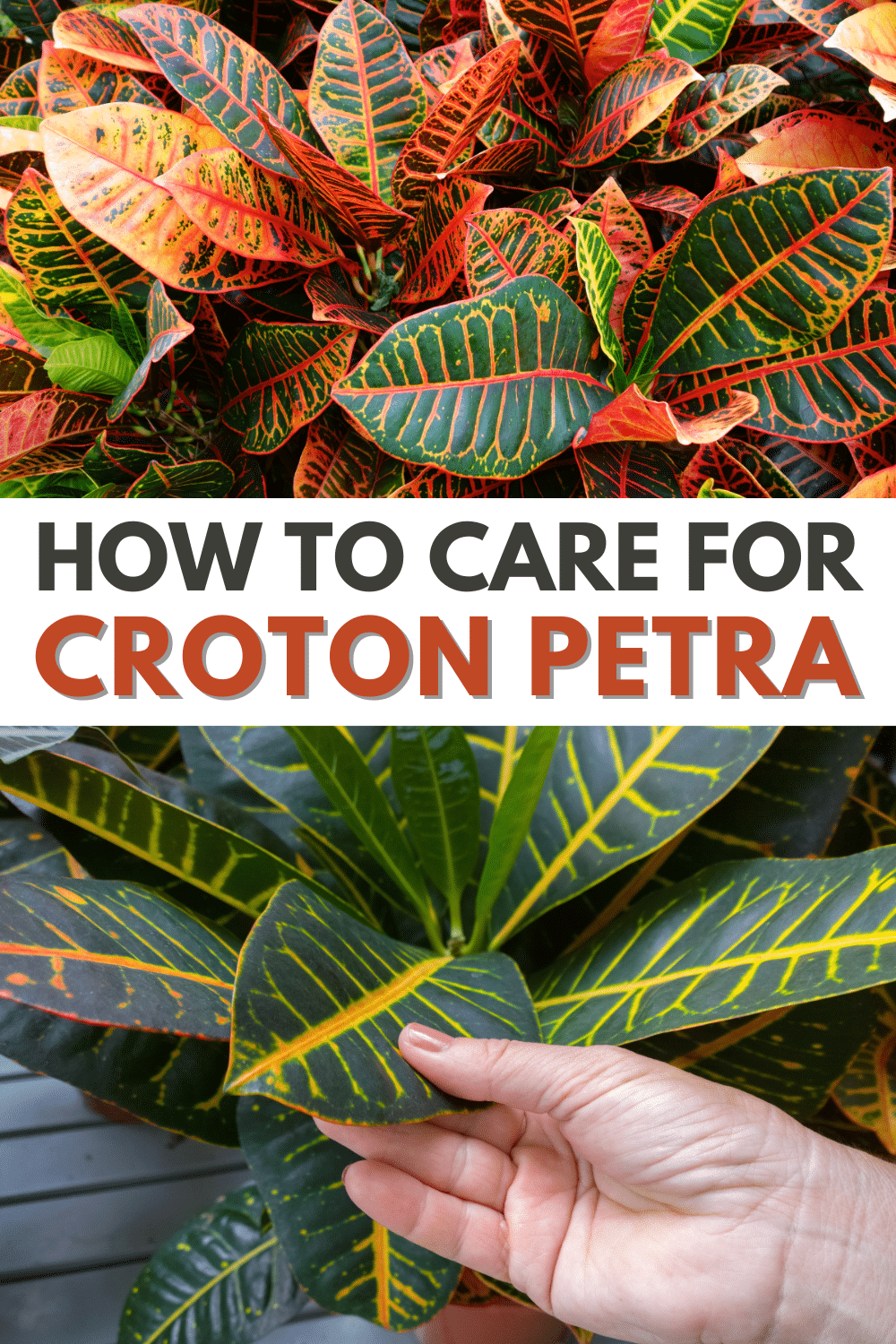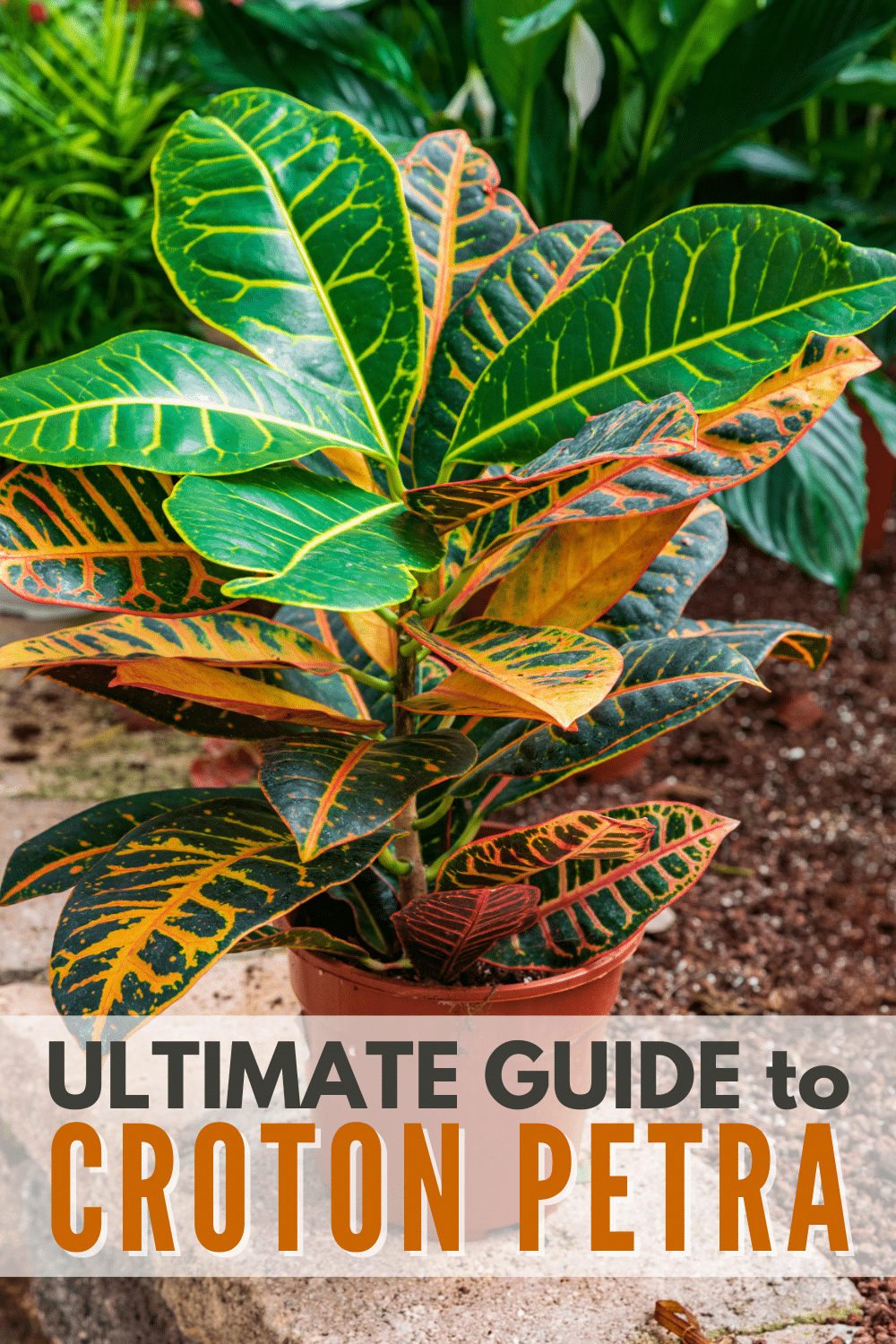If you’re looking for a dazzling addition to your plant collection or you simply want a bright, colorful accent to your home, then you must consider the Croton Petra. It’s also known as “Golden Petra,” which isn’t surprising once you see its beauty before you. Its foliage features a combination of vibrant scarlet hues that can also develop shades of bright yellow-green color.
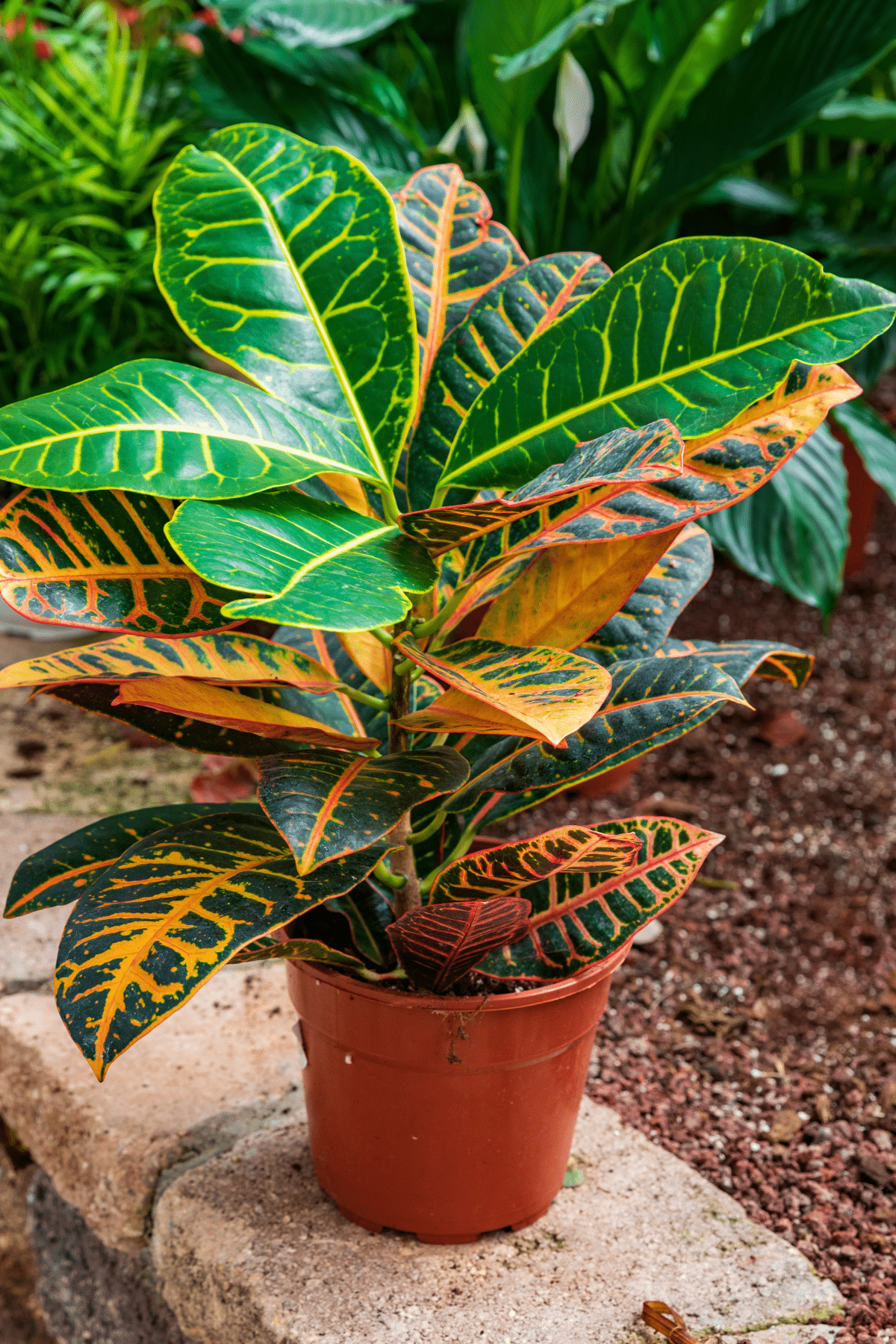
I love how I was able to turn it into a wonderful indoor plant because it goes well with any home motif. Less work for me (because we all love beautiful plants that are a breeze to care for)! Best of all, it’s also a beginner-friendly plant!
So if you’re keen on adding a lovely and fuss-free houseplant to your collection, read on to know how to grow and care for the croton Petra.
Jump to:
- Croton Petra Overview and Origin
- Croton Petra Characteristics and Unique Features
- Croton Petra Plant Care Tips: Temperature and Humidity
- Light and Water Requirements
- What Soil and Fertilizer To Use
- Petra Croton Maintenance Tips: When to Prune and Repot
- How to Propagate the Golden Petra
- Petra Crotons Pest and Common Problems
- Croton Petra Home Decor and Display Ideas
- FAQs
- Make Any Space Glow With a Low-Maintenance ‘Golden’ Plant
Croton Petra Overview and Origin
If you fell in love with the striking colors of the Golden Petra and want this specific plant, you have to know a bit about its botanical name. This should help you avoid confusing it with other plants.
The croton Petra is one of the many cultivars of the Codiaeum variegatum plant from the Euphorbiaceae family. It’s not from the Croton genus despite its common name, although they’re from the same plant family. When shopping for this plant, you might also see it with other names like “Codiaeum Petra.”
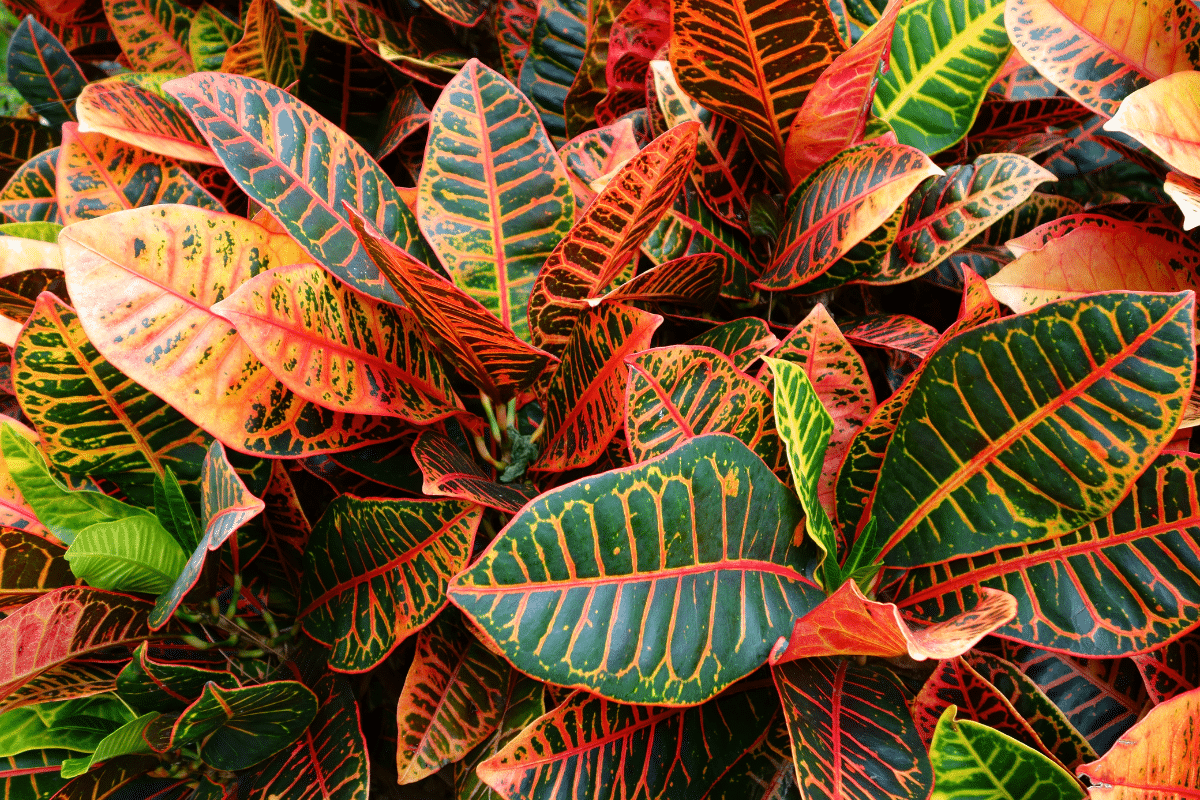
The Codiaeum variegatum was first described in 1753 by botanist Carl Linnaeus and is native to Southeast Asia, specifically Malaysia, as well as the Pacific islands. It has since become a popular house plant because of its splashy foliage.
Croton Petra Characteristics and Unique Features
Let me warn you, croton Petras can grow really tall! When grown indoors, this plant can reach a height of 3 to 5 feet upon maturity. As a tropical evergreen shrub, it can also grow as tall as 8 to 10 feet in its native habitat. If you’re interested in tall plants, check out indoor trees for low light.
It has ovate-shaped leaves that usually measure 2 to 12 inches and primarily feature pointy tips. They appear glossy but tend to have a slightly leathery texture. The common colors present in its leaves are warm shades of red, orange, and pink. They also often have streaks of bright yellow along the veins, while the blade has a deep green hue as well.
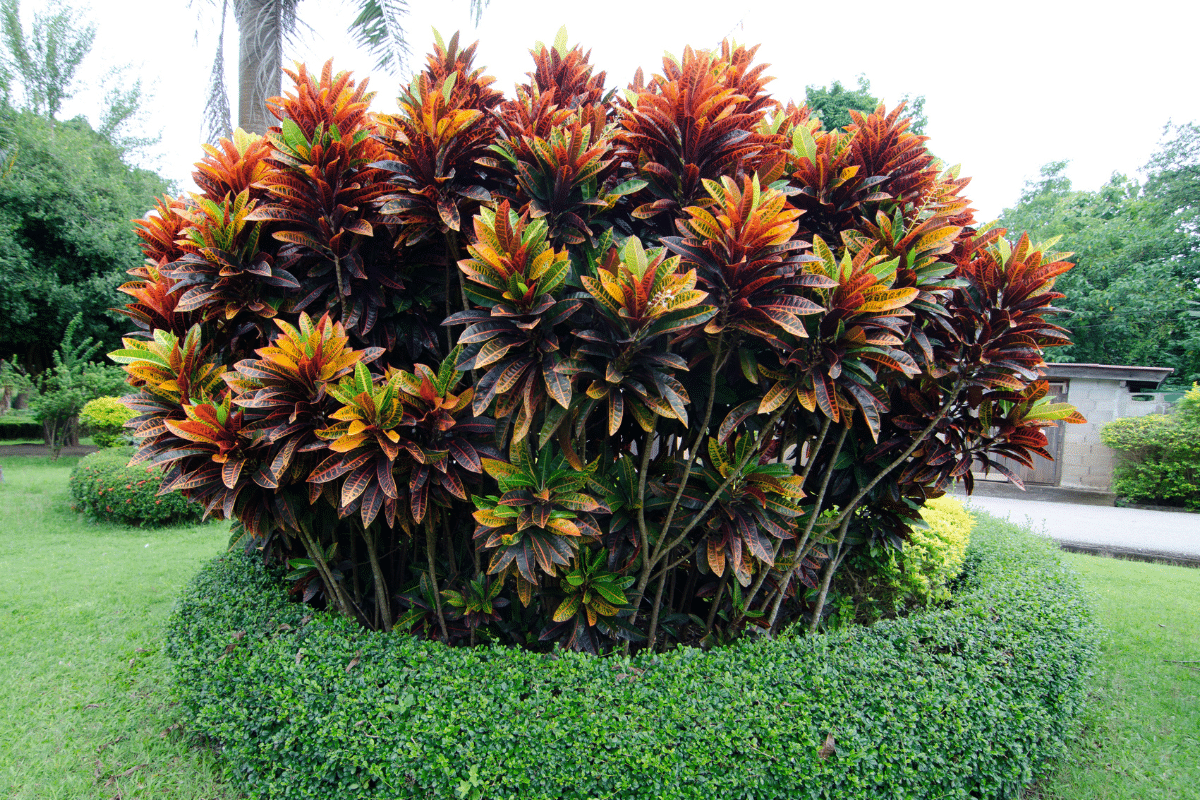
The unique beauty of this plant is that each leaf can have different combinations of those colors. Petra Crotons can look unique from one another, but they’re all equally vibrant. Mine has the yellow-orange-green combo, but I might get the pink-yellow-green combo, too.
The shape of its leaves is often the reason it’s misidentified as the Croton Magnificent, but it’s easy to tell them apart through their variegation. The Petra’s colors trail with each leaf’s veins and along the margins. On the other hand, the variegation of the Magnificent looks more like splotches of colors.
Croton Petra Plant Care Tips: Temperature and Humidity
Originating from regions with tropical climates, this plant will best thrive in a warm and humid environment. The best growing condition should have average temperatures between 60 to 80 degrees Fahrenheit (18 to 29 degrees Celsius).
This plant doesn’t tolerate very cold or freezing climates. It’s best kept indoors in winter, not too close to the windows, and away from drafts. The plant loves moderate to high humidity. You may want to place a humidifier near its pot or place it on a pebble tray with water to help manage the humidity level.
Light and Water Requirements
Sunlight is essential to all plants, but even more so for the Golden Petra. The amount of light it gets can affect its color and variegation, so you have to pay attention to this.
Bright, direct light and full sun are the requirements for this plant, so it has to get some sunshine for at least four to six hours a day. Make sure you pay attention to this detail if you hope this tropical plant produces the most vibrant-looking leaves possible.
While it needs direct light, it can be sensitive to scorching sunlight. Avoid putting it somewhere it gets direct sun rays for hours at the hottest times of the day, typically between noon and early afternoon.
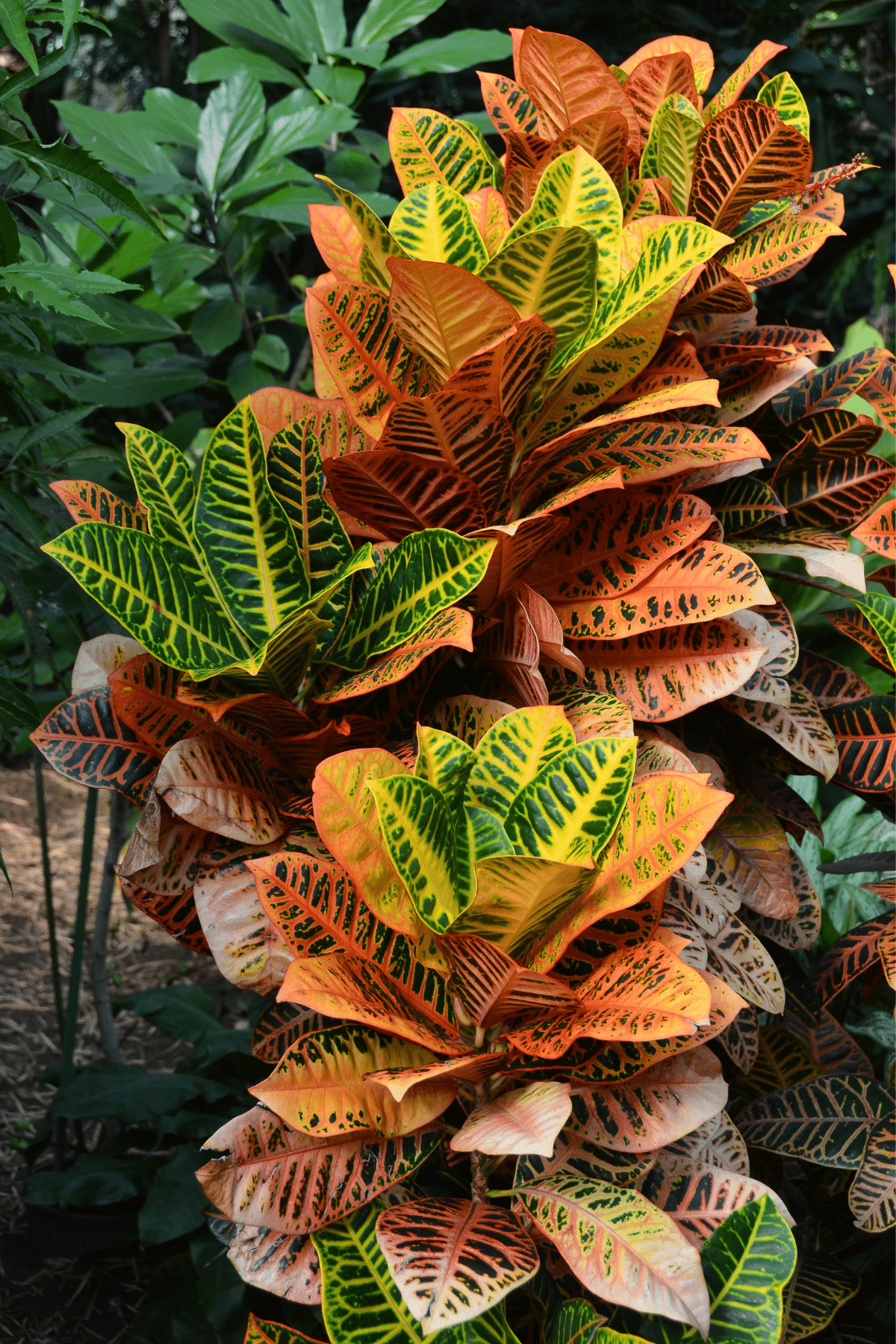
One trick is to put it in a room with direct sunlight in the early mornings or later in the afternoon when the sunlight is a bit cooler. If you’re leaving it outdoors, it will greatly help if your Petra has some protection in the middle of the day when the sun is at its hottest.
Its water needs are a bit more flexible because it usually needs watering every two to three weeks only, which is another thing all busy moms can appreciate! You can tell if it’s time to water the plant when the top 2 inches of the soil has no moisture left.
Otherwise, wait a little more time to avoid overwatering it. It’s also going to need less water during the winter.
What Soil and Fertilizer To Use
The plant loves moist soil without being flooded at extended periods, so the best soil you can use is one that’s rich and well-draining. You can buy regular potting soil and mix it with organic compost or peat moss to hold moisture well. Your plant can get the most nutrients if you can keep the soil’s pH level between 4.5 and 6.5.
It doesn’t need much fertilizer compared to other indoor plants. During its growing seasons, which are in the spring and summer, you’ll only need to feed it with an organic houseplant fertilizer once a month. If you find using liquid fertilizer easier, you can also go for that one.
Keep in mind that this plant goes dormant in the fall and winter, so there’s no need to fertilize it during these seasons.
Petra Croton Maintenance Tips: When to Prune and Repot
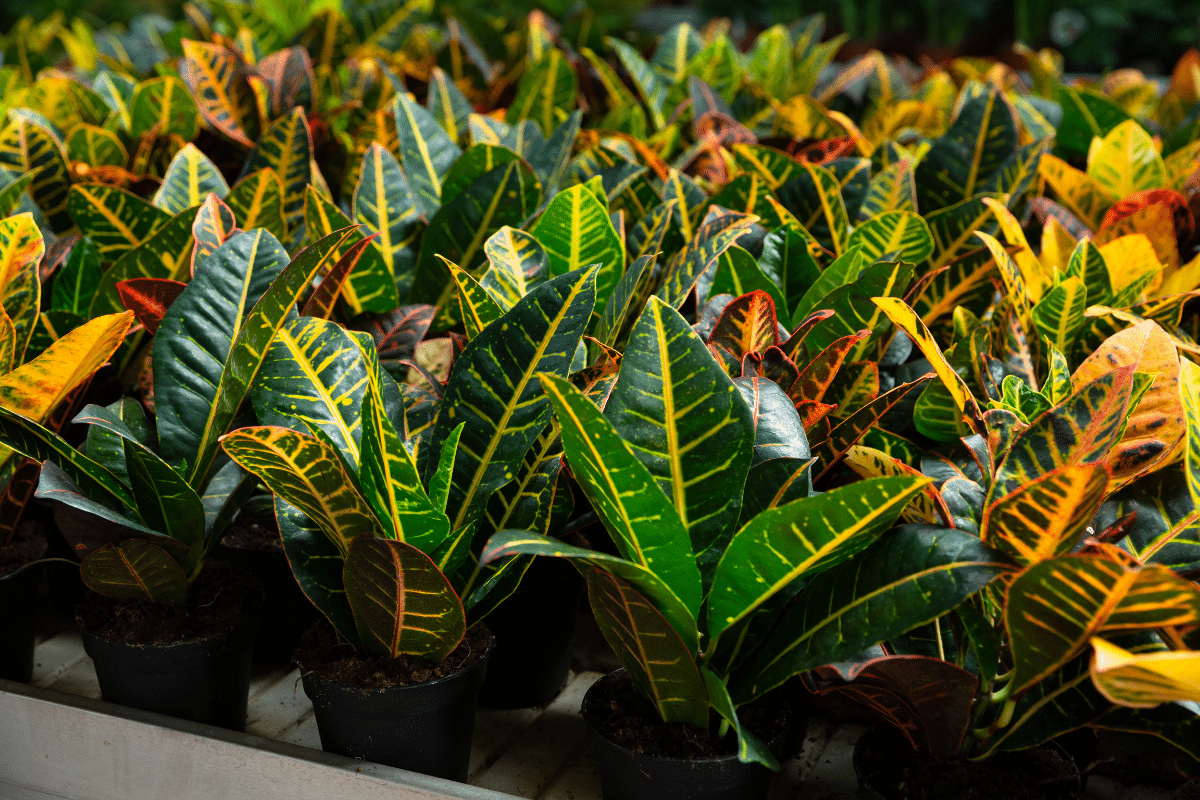
Pruning
I adore my croton Petra and highly suggest it to all homemakers out there. One of the reasons this can be a great addition to your home is it’s very low-maintenance and doesn’t need constant pruning. Unless you want to maintain a certain shape, you’re free to trim its stems as needed.
Pruning becomes a necessity when you see any dead leaf. If there’s also an unhealthy-looking stem or branch, don’t hesitate to prune it.
There are a couple of things you need to keep in mind. First, don’t remove more than 1/3 of the stem. Second, always make a sharp cut just above a node. Remember to always use clean pruning shears to keep your plant healthy. Pruning is also best done between late fall and winter when it’s not in the active season.
Repotting
This perennial plant will only need repotting once every few years. But you can repot a young plant once a year within its first three active seasons, which is around spring to early summer.
A good sign that it’s time to repot a Petra plant is when you start seeing roots growing out of the drainage hole. In this case, carefully transfer it to a new pot that’s about two inches bigger than its previous vessel.
How to Propagate the Golden Petra
The best way to propagate croton plants is by stem cutting. Trim 3 to 4 inches of a healthy stem that holds at least three leaves and place it into a pot of rich, moist soil. It won’t need a liquid fertilizer or a rooting hormone, but adding them can encourage the growth of your new plant.
Best propagation results can be achieved if the new plant is placed in a warm room or at a temperature of 70 to 80 degrees Fahrenheit. Keep it in a bright space where it can get direct sunlight. Then, wait three to four weeks for new roots to appear.
Petra Crotons Pest and Common Problems
Pests
Unfortunately, common pests such as spider mites, mealybugs, gnats, scales, and whiteflies love to live on croton Petras. In any case, you can treat the plant with a regular pesticide. Spraying it with alternatives like insecticidal soap or neem oil is also a great idea.
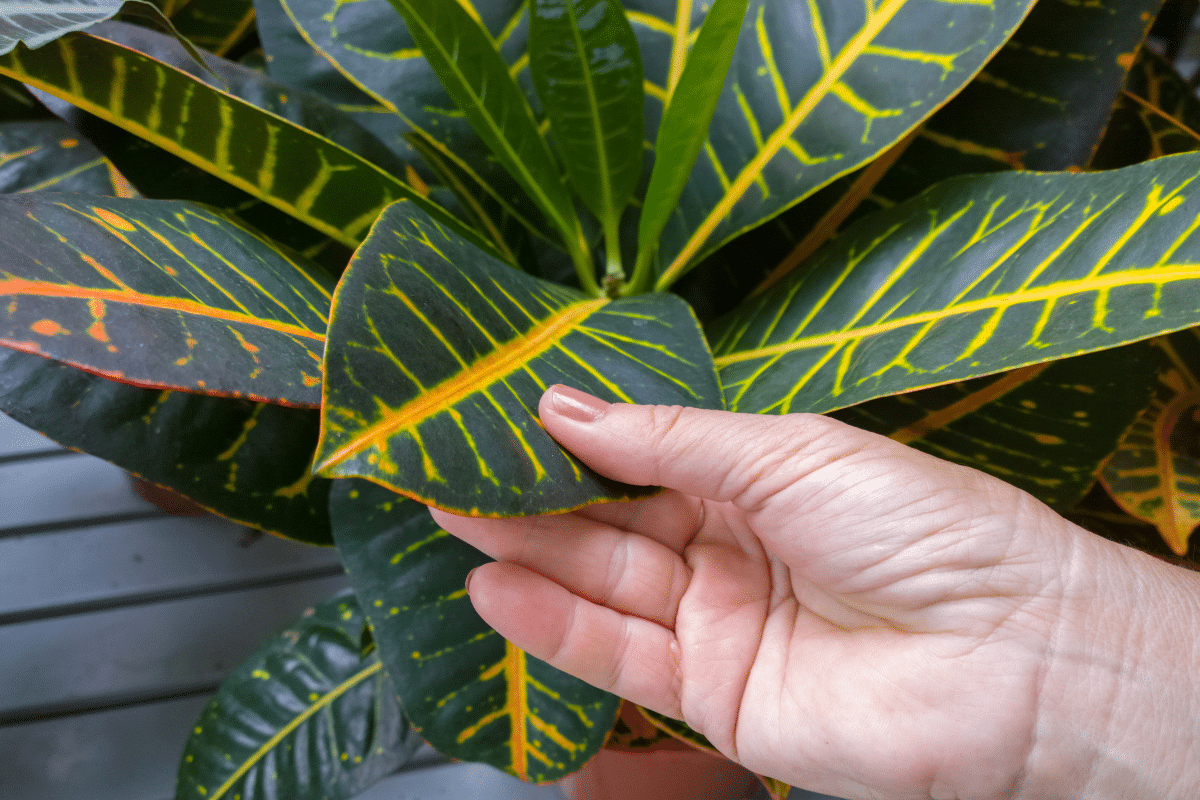
You should make it a point to check your plants because pests can damage plants quickly. Regularly checking the stems, branches, and leaves can help you prevent severe infestations. Otherwise, your plant may have already suffered immense damage, and saving it might no longer be an option.
Problems
Common problems for this plant often affect the appearance and health of its leaves. If the leaves or their petioles look flimsy or if they’re dropping, the plant is either thirsty or getting too much water. When the colors of the leaves are less vibrant than normal, it usually means the plant is not getting enough sunlight.
Falling leaves are common signs of not meeting the plant’s light and water requirements. This may be caused by insufficient sunlight, dried-up soil, and overwatering.
Fungal and bacterial infections are common diseases to watch out for, too. Quickly isolate the infected plant, then remove any affected leaf, stem, or branch. For severe infections, you can treat the Petra with a copper-based fungicide.
Croton Petra Home Decor and Display Ideas
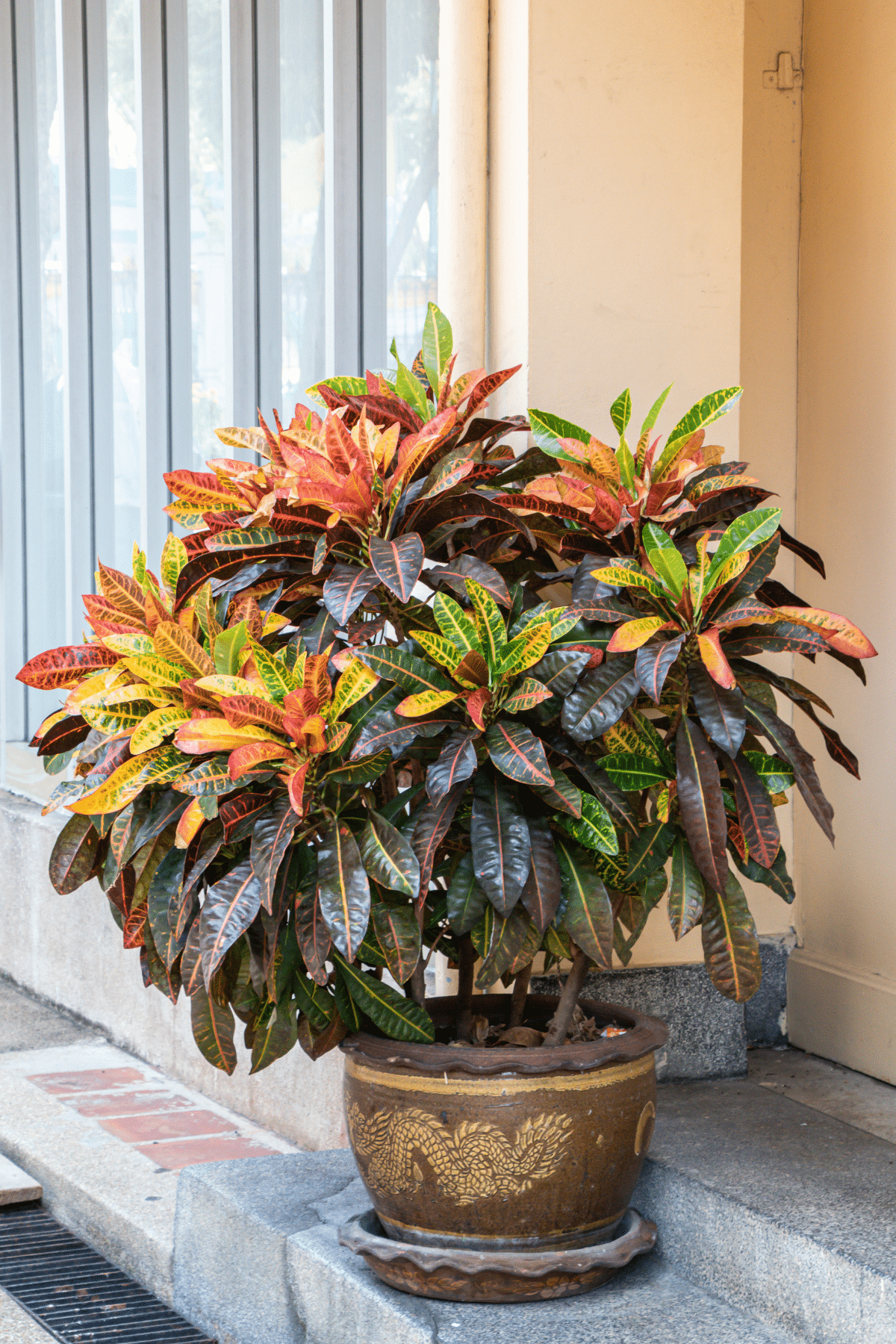
Placing your variegated plant outdoors is only favorable in USDA hardiness zones 9 to 11. Remember, this plant loves warm climates and doesn’t tolerate cold temperatures well.
You can place it in a pot by the front porch or in a greenhouse. Its eye-catching foliage also makes it a great addition to your patio or lanai, where it can get much sunshine without getting scorched daily.
The Golden Petra can grow well inside your home, too! You can place it near an east- or west-facing window where it can get direct light in the morning or the afternoon for a few hours. As for me, I prefer putting my Petra indoors because I like how it blends with my home decor. It would look fabulous next to any of these beautiful purple house plants.
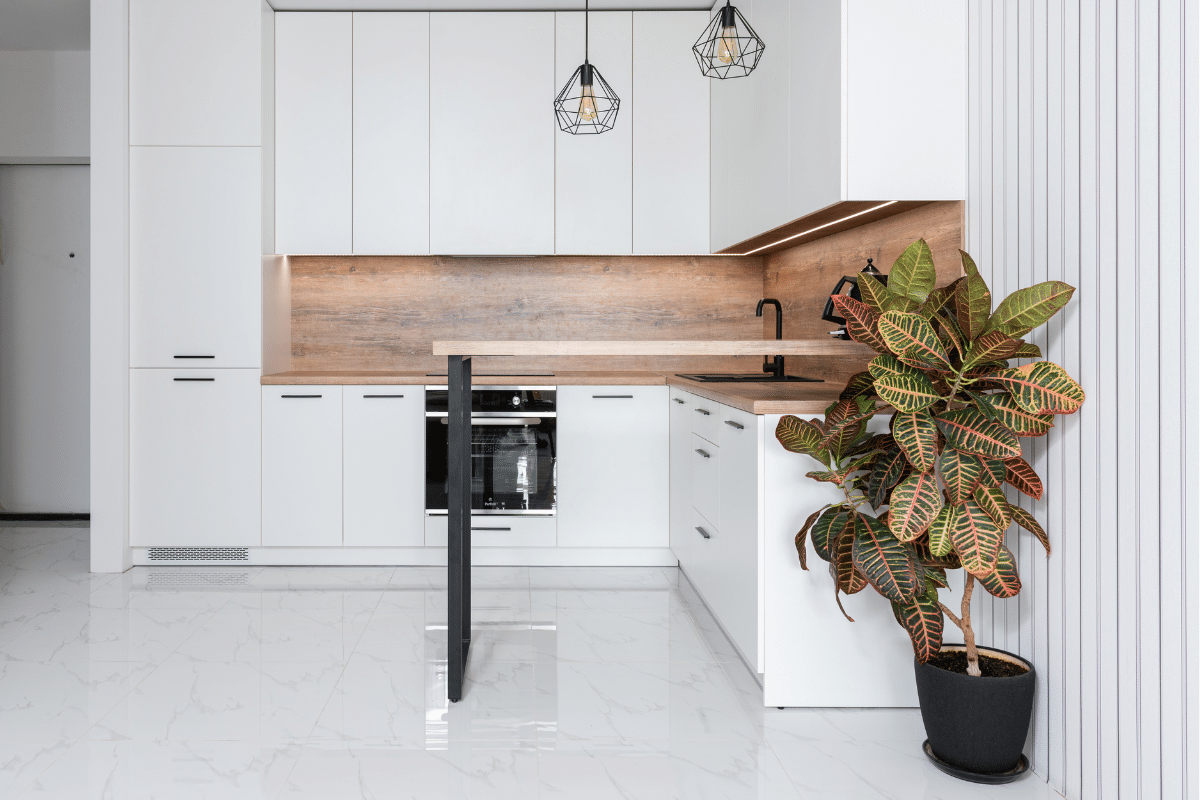
You’ll only need a simple pot for this one because the array of colors in its foliage will certainly get all the attention. It also looks good in a planter basket to give your house a cozy, tropical vibe.
FAQs
It is tolerant of moderate indirect sunlight, although the plant may not achieve vibrant foliage if it’s not getting full sun exposure.
Variegated croton plants can be toxic to humans and pets. When ingested, it can cause mouth irritation, vomiting, and diarrhea. Make sure it’s out of reach of children and animals.
Its sap can also cause skin irritation, so it’s best to wear gloves when you’re tending to this plant.
Croton plants, including the Petra variant, have a slow to moderate growth rate. On average, it can grow up to 12 inches every active season when it’s cared for in the right environment.
Make Any Space Glow With a Low-Maintenance ‘Golden’ Plant
There are many reasons the Golden Petra has been one of the most popular indoor plants. By letting it grow in the right environment, you’re getting a beautiful plant with marvelous foliage that will certainly add color to any space.
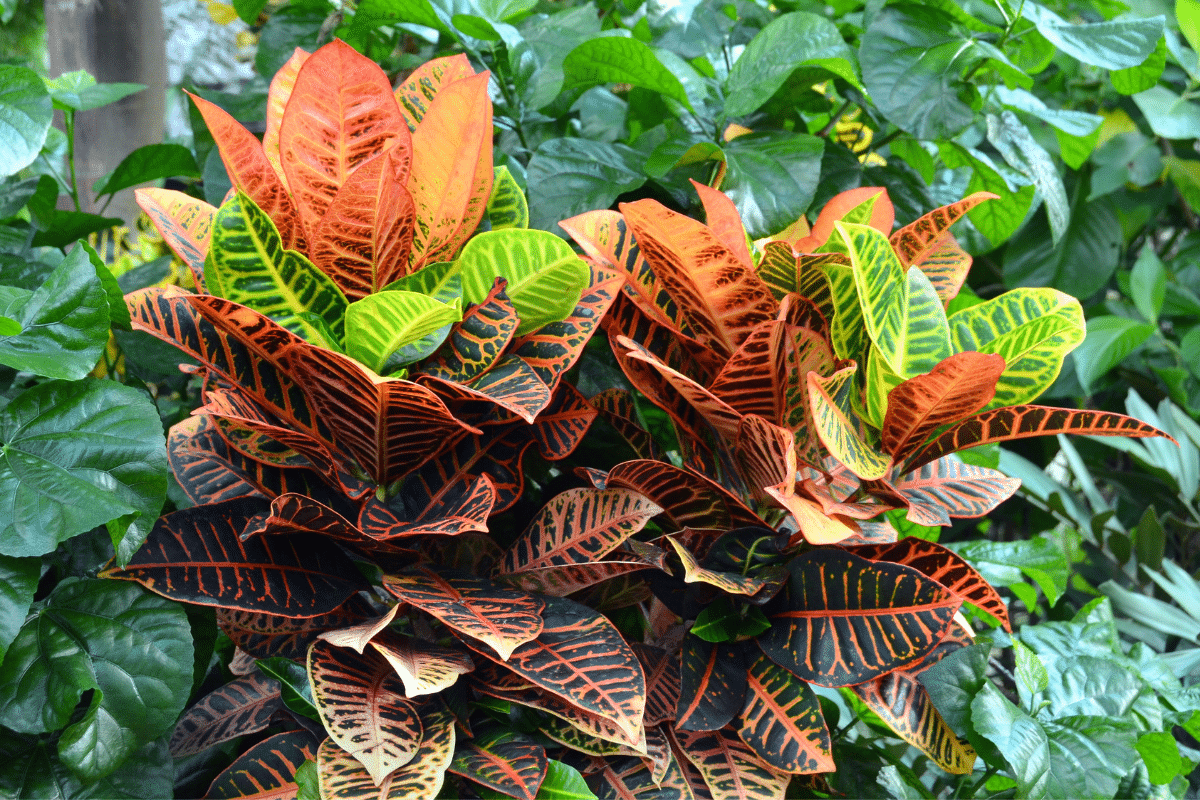
Taking care of this plant is not too tedious either. Find a bright room with enough sunlight and warmth, and this plant can be a stunning fixture in your home for several years.
Looking for a gorgeous, low-maintenance plant, mama? The croton Petra is no doubt on top of the list!

